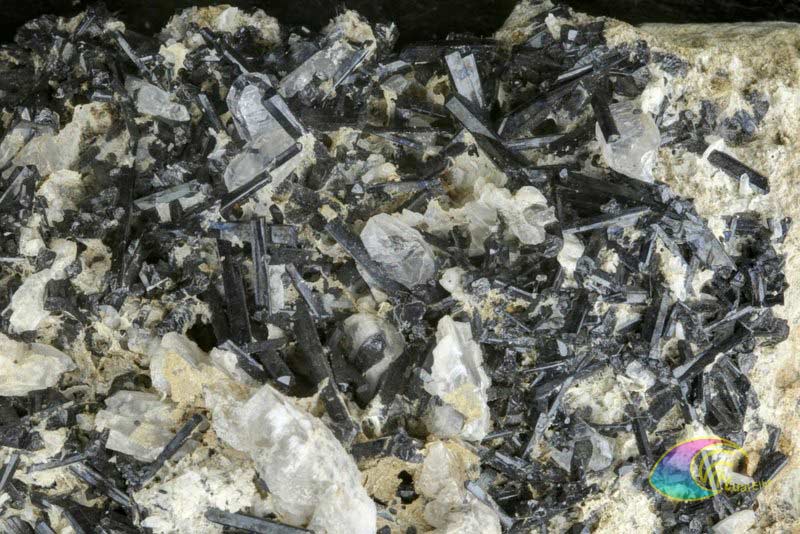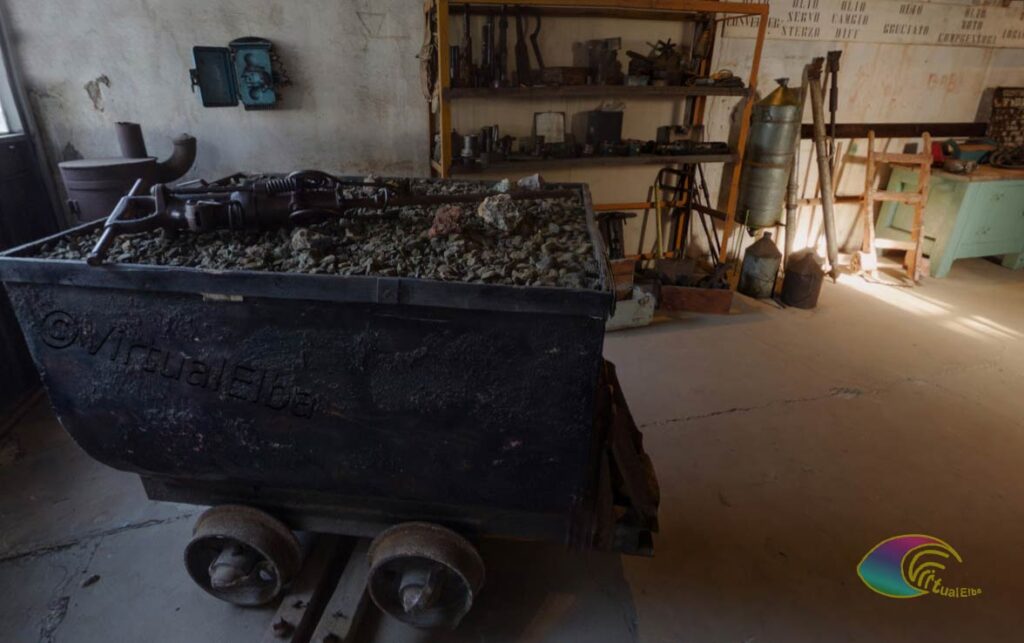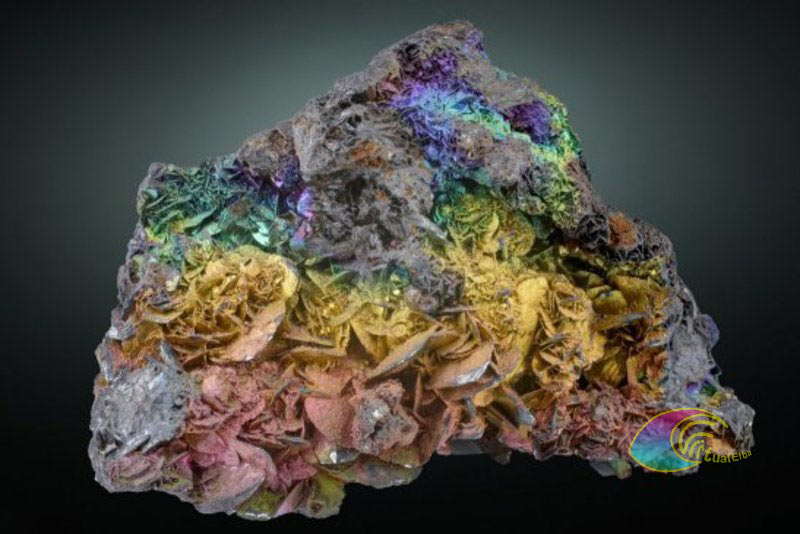The Vallone Mines and the Museum of the Old Workshop
6 km from the town of Capoliveri, immersed in the heart of the Tuscan Archipelago National Park, are the Calamita Mines, which include the Miniera del Vallone and the Old Workshop Museum, obtained from the shipyard’s old mechanical workshops.
The Calamita Mines, a treasure trove of industrial archeology in which it is possible to discover all the mining and working history of the island of Elba.
The conformation of the Vallone mine
The Vallone mine is made up of steep steps that descend towards the sea, gentle paths that cross the scrub, black and shiny boulders, blue and green veins, wild coasts, breathtaking views: this is what the Vallone construction site is made of, the largest and of Capoliveri.
Against the sky the old processing plants stand out, with their strange geometries, to show us that we are in the mine, where once people worked here and dust, noise, men and machines inhabited this new peace, today in the heart of the Tuscan Archipelago National Park.
Vallone mine a millenary extraction
The Vallone is the open-air construction site of the Capoliveri Mine, it bears the signs of a millenary work, like the wrinkles on the faces of the quarrymen who, once the effort is over, contemplate the sea.
The most modern excavations, with the massive use of explosives, have erased the most remote testimonies but it is easy to imagine that the Etruscans and Romans have obtained good quantities of Hematite, Limonite and Pyrite and that perhaps, even earlier, men have gone this far in search of native copper, of which the area was rich.
The remaining traces belong to the more recent past, the remaining machinery worked until 1981, the year of closure for all the mines on Elba.
The intensive exploitation of the Calamita Mines begins in the 19th century
Lo sfruttamento intensivo del cantiere comincia nel XIX secolo e dai primi anni del ‘900 fino al secondo dopoguerra vede l’ingresso di impianti e tecnologie sempre più avanzati, che cambiano il profilo delle montagne e della costa.
Merito del lavoro dell’uomo se oggi la miniera del Vallone ha una bellissima spiaggia bianca, nata dall’accumulo di quei minerali spesso bellissimi che, privi di ferro, non si vendevano alle acciaierie e venivano scaricati sulla costa.
Collectors searching in the Vallone mine
It is thanks to the incredible mineralogical variety that the shipyard is often a destination for collectors in search of azurite, malachite, chrysocolla, aragonite, gypsum, garnets, epidote and ilvaite.
Lo raccontano i minatori che, imparato il valore e la bellezza di questi minerali, diventarono abili a riconoscere i “pezzi buoni” e a nasconderli per poi venderli ai primi turisti, bramosi di ottenere un perfetto cristallo di Pirite o un prezioso campione blu di Azzurrite.
Qualcuno si commuove quando ripensa che per poche lire di quei “pezzi” ne ha caricati così tanti sui vagoni dell’Italsider, mostra orgoglio e sorpresa quando racconta che i minerali dell’Elba sono in tutti i musei del mondo, si stupisce un po’, felice che il valore della sua terra oggi sia nella bellezza dei cristalli e della natura e nel fascino della sua storia.
The large area of the Vallone mine
The Vallone mine included a vast territory, divided into many sectors. There were many minerals: magnetite, hematite limonite, ilvaite and hendenbergite, malachite, azurite, calcanite, dioptase, native copper and cuprite, and also erythrite (cobalt arsenate).
Upper part of the Vallone mine
Albaroccia – occupies the highest part, up to 300m. slm Magnetite and limonite were extracted on large steps.
New Zone: Lodestone mining, active until the mines are closed. Also presence of ilvaite and hendenbergite.
Macei Alto: mining of magnetite and hematite, hendenbergite.
Polverary: there are the two buildings of the powder magazine, explosives and mine devices. The new powder magazines date back to the 1960s. A deposit of explosives was carried out on a monthly basis, for all the construction sites of Punta Calamita. The buildings used previously still exist, located below, surrounded by vegetation, and later used for agricultural purposes, perhaps by the area managers themselves.
Lower part of the Vallone mine
here magnetite was mainly mined, and hematite in smaller quantities. Malachite, azurite, chalcanite, dioptase, native copper and cuprite can also be found, as well as erythrite (cobalt arsenate).
Vallone – includes the former Piane and Francesche shipyards from 110 to 40 m.
Punta Rossa: located between the road above and the beach of Punta Rossa, with excavations from 1880 for almost a century, until exhaustion. Limonite was mainly extracted. From the beach the tailings of the mine have drawn a tip that fits into the sea.
Macei Basso: located west of Punta Rossa, to cultivate magnetite. It is exhausted and crossed by the road connecting the other construction sites.
At the lower level, of the Vallone mine, there is a small lake, it was envisaged that excavations had to be carried out up to -15 meters above sea level, then creating a connection with the sea, then filling it with water, to build a small protected port. This was not accomplished.
The small lake of the Vallone mines
At the lower level, of the Vallone mine, there is a small lake, it was envisaged that excavations had to be carried out up to -15 meters above sea level, then creating a connection with the sea, then filling it with water, to build a small protected port. This was not accomplished.

In addition to the mining park, the Calamita is an ideal place for Trekking and Biking
This area of Elba, an essential place for the mining history of Elba, is also characterized by a particular faunal and vegetative interest, presenting a varied vegetation where there are rare species and some endemic species.
Excellent starting point for getting to know the surrounding area, it is the starting point for various trekking routes and guided tours of the underground mines, to reach wild beaches and the path network of the renowned “Bike Park”.
Museum of the Old Workshop
The museum is set up inside the old mechanical workshops of the Vallone shipyard. The exhibition of original objects and furnishings allows you to understand the life of miners, quarrymen, the history of the mines and the territory.
Nel Museo sono stati ricostruiti alcuni ambienti, come l’infermeria, l’officina e l’ufficio contabile, grazie al recupero e all’utilizzo di materiali originali.
É il luogo giusto in cui immergersi nella vita quotidiana dei minatori, scoprire le tecniche estrattive e le caratteristiche dei vari minerali con i loro possibili impieghi.
All’interno del percorso museale, grazie ad un ultimo intervento di restauro, è stata oggi realizzata un’ulteriore sala espositiva dedicata alla valorizzazione dei minerali presenti sul territorio.














